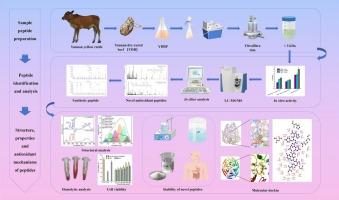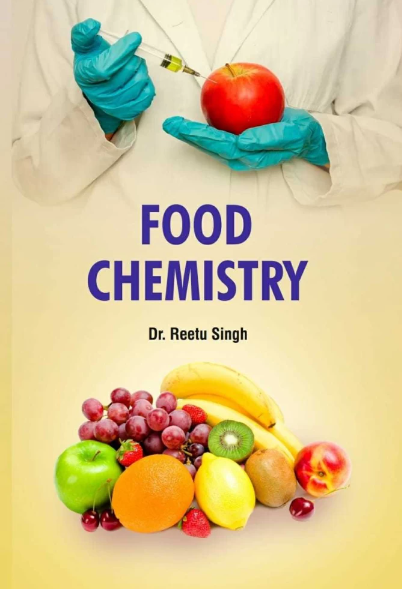Identification and characterization of novel antioxidant peptides from Yunnan dry-cured beef: A combined in silico and in vitro study
IF 8.5
1区 农林科学
Q1 CHEMISTRY, APPLIED
引用次数: 0
Abstract
Dry-cured meats are a good natural source of bioactive peptides. However, there is limited information on the composition and antioxidant activity of peptides in Yunnan dry-cured beef (YDB). This study aimed to identify novel antioxidant peptides from YDB using peptidomics, in silico analysis, and in vitro experimental validation while predicting their antioxidant mechanism through molecular docking. A total of 541 peptides were identified in YDB, with the predominant sources being creatine kinase (13.5 %), myosin (10.4 %), and actin (7.4 %). The novel antioxidant peptides VGSYEDPYH (VH9) and FGEAAPYLRK (FK10) demonstrated a high safety profile, with a hemolysis rate of less than 5 %. Notably, VH9 exhibited excellent ABTS radical scavenging activity (IC50 = 19.698 μM), DPPH radical scavenging activity (IC50 = 1500.825 μM), and protection against oxidative stress injury in HepG2 cells. Molecular docking studies revealed that hydrogen bonding and hydrophobic interactions were the primary forces driving the binding of VH9 to the active sites of ABTS, DPPH, Keap1, and myeloperoxidase (MPO). VH9 may protect cells from oxidative damage through radical scavenging, inhibition of reactive oxygen species (ROS) generation, and modulation of the Keap1-Nrf2 antioxidant pathway. Peptides derived from YDB exhibited strong antioxidant activity and showed potential for application as natural antioxidants.


云南干腌牛肉新型抗氧化肽的鉴定与表征:体外与体外联合研究
干腌肉是生物活性肽的良好天然来源。然而,关于云南干腌牛肉(YDB)中肽的组成和抗氧化活性的信息有限。本研究旨在通过肽组学、硅分析和体外实验验证等方法从YDB中鉴定出新的抗氧化肽,并通过分子对接预测其抗氧化机制。在YDB中共鉴定出541个肽,主要来源是肌酸激酶(13.5 %)、肌球蛋白(10.4 %)和肌动蛋白(7.4 %)。新型抗氧化肽VGSYEDPYH (VH9)和FGEAAPYLRK (FK10)具有较高的安全性,溶血率小于5% %。值得注意的是,VH9具有优异的ABTS自由基清除活性(IC50 = 19.698 μM), DPPH自由基清除活性(IC50 = 1500.825 μM),并对HepG2细胞的氧化损伤具有保护作用。分子对接研究表明,氢键和疏水相互作用是驱动VH9与ABTS、DPPH、Keap1和髓过氧化物酶(MPO)活性位点结合的主要力量。VH9可能通过清除自由基、抑制活性氧(ROS)的产生和调节Keap1-Nrf2抗氧化途径来保护细胞免受氧化损伤。YDB衍生的多肽具有较强的抗氧化活性,具有作为天然抗氧化剂的应用潜力。
本文章由计算机程序翻译,如有差异,请以英文原文为准。
求助全文
约1分钟内获得全文
求助全文
来源期刊

Food Chemistry
工程技术-食品科技
CiteScore
16.30
自引率
10.20%
发文量
3130
审稿时长
122 days
期刊介绍:
Food Chemistry publishes original research papers dealing with the advancement of the chemistry and biochemistry of foods or the analytical methods/ approach used. All papers should focus on the novelty of the research carried out.
 求助内容:
求助内容: 应助结果提醒方式:
应助结果提醒方式:


